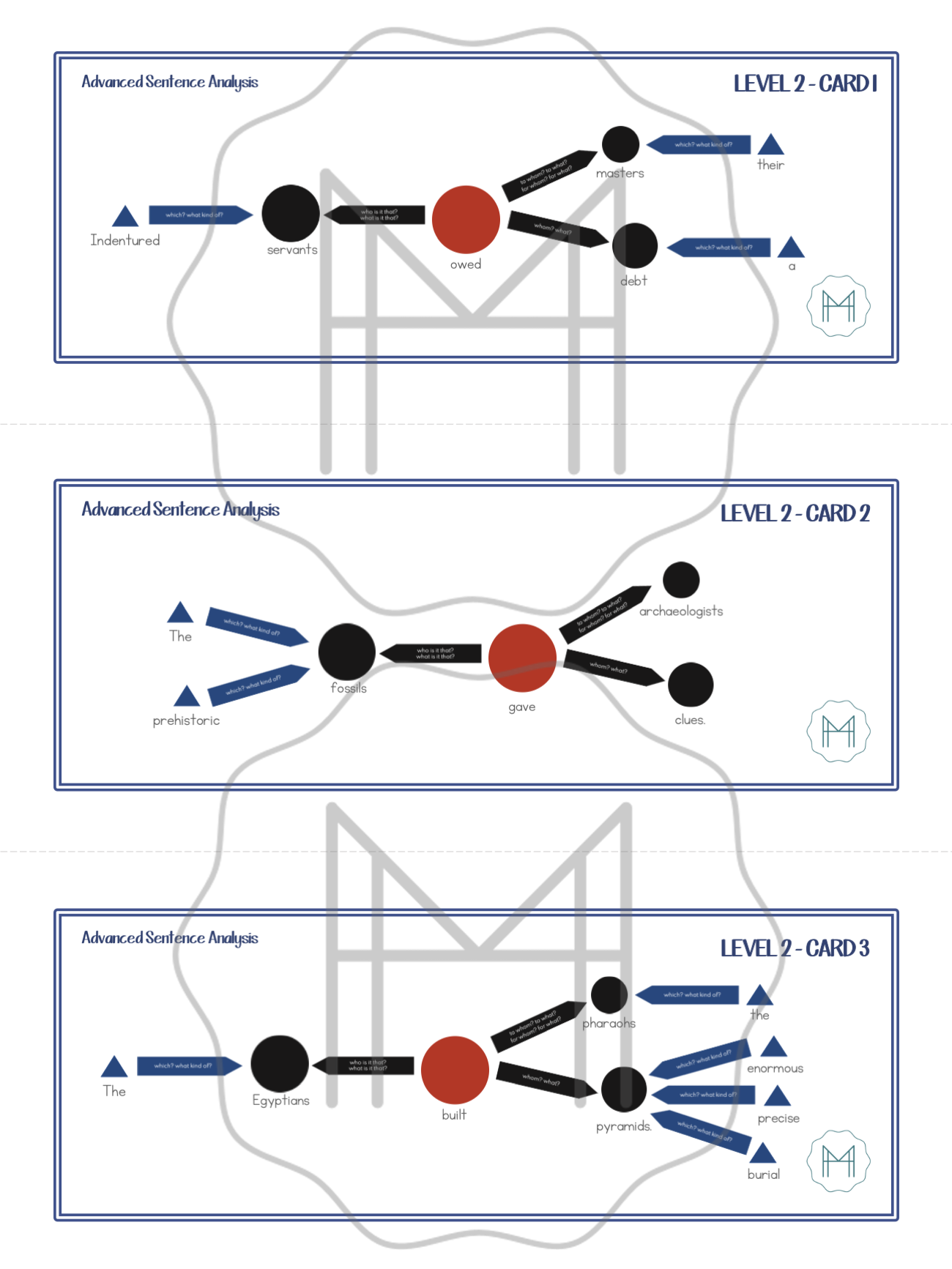The Modern Montessori Guide
Advanced Sentence Analysis Task Cards
Couldn't load pickup availability
Sentence Analysis is the Montessori equivalent to the traditional sentence diagraming. This material relates beautifully to previous language works to which Montessori students have been introduced. By providing the children with a concrete representation of each sentence component, the foundations and theory behind sentence construction become more tangible and relatable.
Why do we teach Sentence Analysis?
The analysis of writing assists the child in identifying a set of rules that can be transferred into their own written work as well as the study of foreign languages. In this way, the child begins to identify patterns that allow them to broaden and strengthen their sentence construction. Additionally, as their reading level increases, the child is presented with more complex sentence structures that can at times be hard to follow. Having a background in Sentence Analysis allows the child to break down complicated sentences to identify the subject, predicated, direct object, etc., of compound-complex sentences making them more manageable.
These cards are made to be used with my Sentence Analysis printable material. Each level builds on the one before and contains nine task cards with corresponding answer keys. These could either be printed double sided on the task card or be printed separately, laminated, and grouped together on a ring for easy checking.
Table of Contents
Pg. 2: Suggested Lessons - Appositives, Predicate Adjectives, Predicate Nominatives
Pg. 3: Suggested Lessons - Indirect Objects and Adverbs
Pgs. 4-5: Leveled Set Labels
Pgs. 6-11: Level 1 - Task Cards 1-9 and Keys
Pgs. 12-17: Level 2 - Task Cards 1-9 and Keys
Pgs. 18-23: Level 3 - Task Cards 1-9 and Keys
Pgs. 24-29: Level 4 - Task Cards 1-9 and Keys
Pgs. 30-35: Level 5 - Task Cards 1-9 and Keys
Pg. 36: Advanced Sentence Analysis Question Guide Example
Pg. 37: Advanced Sentence Analysis Question Guide (Print as many copies as needed)
Pgs. 38-39: Advanced Sentence Analysis Question Cards
Pg. 40: Advanced Sentence Analysis Student Journal Example
Pg. 41: Terms of Use
Share






